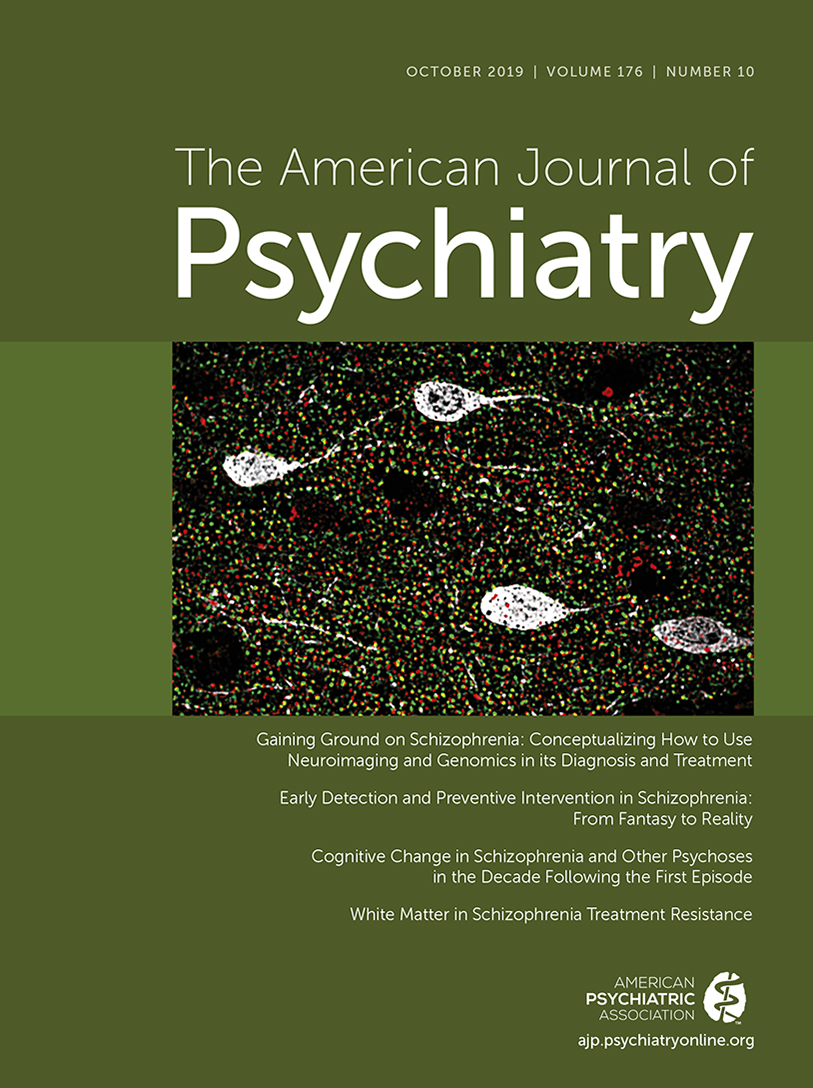More Thoughts on Intranasal Esketamine: Response to Drevets et al.
To the Editor: I appreciate the response from Drevets et al. (1) to my commentary (2) on the Popova et al. report (3) of intranasal esketamine’s pivotal trial and recent approval by the Food and Drug Administration. Their letter makes a number of cogent points in an effort to reassure me and the scientific community about the safety and efficacy of intranasal esketamine. There are a few points to be made in rejoinder to their letter.
The design used in the esketamine development program consisted of beginning one of several approved antidepressants and combining it with either placebo or esketamine. Drevets et al. (1) claim that their study, the Popova et al. article (3), is the “first head-to-head trial in which a novel antidepressant proved significantly more effective than a newly added conventional antidepressant.” If I am not misreading the design, they have not demonstrated that. They did not compare esketamine with a known antidepressant. Rather, they compared esketamine augmentation with placebo augmentation of known antidepressants. That has been demonstrated for several approved agents—e.g., aripiprazole, quetiapine, and other second-generation antipsychotic medications (4).
Drevets et al. (1) argue that the fact that all patients were taking an antidepressant minimizes the expected effect of the esketamine in comparison to placebo. That rationale suggests we are seeing a strong underlying drug effect from the recently started antidepressant. However, they seem to discount such effects in the relapse prevention study, where switching to placebo was significantly inferior to continuing esketamine, such that relapse rates were much higher after switching to placebo, with significant separation from continued esketamine administration occurring by 2 weeks (5). This occurred in spite of staying on the antidepressant that Drevets et al. (1) argue supposedly minimized the differences seen between esketamine and placebo in the acute augmentation study (3). One should be concerned that continuing known antidepressants in patients who have responded to antidepressant plus esketamine treatment cannot prevent relapse when the patient stops his or her esketamine. As I noted in my commentary (2), there are many unanswered questions. What does one do in the face of relapse? Reintroduce the esketamine? Bolster the dose of the antidepressant?
The effect size in the Popova et al. acute antidepressant augmentation study (3) was modest (0.30), while the number needed to treat was quite low, suggesting that there were a reasonable number of patients who did well on the agent. Unfortunately, when studying ketamine or esketamine, it is difficult to truly blind administration of the compound, and patients were not queried as to whether they thought they were on an active drug or vehicle. Having some dramatic responders is characteristic of ketamine, although the response or remission rate in a trial may not be high (6). A highly responsive subgroup may be due to some individuals attaining high blood and brain concentrations of ketamine that could reach the level where a mu opiate receptor agonistic effect is attained. Drevets et al. (1) point out that drug concentrations generally attained with ketamine make it unlikely that sufficient mu agonism is attained to account for an antidepressant response. But it is possible that in these well-defined responders, high enough concentrations of ketamine and its enantiomers are attained to affect the mu opiate receptor and generate rapid and dramatic responses. Does the investigative team have the data to clarify this issue? One important note: in the Williams et al. article (7), in which we implicated opiate mechanisms in mediating ketamine’s effects, we were unable to differentiate between ketamine causing direct mu agonism relative to causing a release of endogenous opioids. Thus, a mobilization of endogenous opioids may still play a key role in ketamine’s antidepressant effects, as hypothesized by Pacheco et al. in a study involving the effects of ketamine on antinociception in rodents (8).
Of significant concern were the suicides observed in the esketamine extension studies. Although Drevets et al. (1) attempt to reassure us that this was to be expected from known cohorts of patients with depression followed over time, I do not find this reassuring. Patients who completed suicide were not suicidal during the study, and the suicides occurred 4–21 days after the last dose of esketamine. To my eye, this appears suspicious. A collaborative research group that I have participated in over the years has not observed suicides in longer-term studies of patients with chronic depression (9, 10). Only time will tell whether my concerns regarding these suicides are overblown. What is important, however, is that the risk evaluation and mitigation strategy for esketamine includes follow-up for several weeks after stopping esketamine to answer this potentially serious problem.
1 : Comment on a word to the wise about intranasal esketamine (letter). Am J Psychiatry 2019; 176:856–857Abstract, Google Scholar
2 : A word to the wise about intranasal esketamine. Am J Psychiatry 2019; 176:422–424Link, Google Scholar
3 : Efficacy and safety of flexibly dosed esketamine nasal spray combined with a newly initiated oral antidepressant in treatment-resistant depression: a randomized double-blind active-controlled study. Am J Psychiatry 2019; 176:428–438Link, Google Scholar
4 : Schatzberg’s Manual of Clinical Psychopharmacology, 9th ed. Washington, DC, American Psychiatric Association Publishing, 2019Google Scholar
5
6 : Single, repeated, and maintenance ketamine infusions for treatment-resistant depression: a randomized controlled trial. Am J Psychiatry 2019; 176:401–409Link, Google Scholar
7 : Attenuation of antidepressant effects of ketamine by opioid receptor antagonism. Am J Psychiatry 2018; 175:1205–1215Link, Google Scholar
8 : Central antinociception induced by ketamine is mediated by endogenous opioids and μ- and δ-opioid receptors. Brain Res 2014; 1562:69–75Crossref, Medline, Google Scholar
9 : Sertraline versus imipramine to prevent relapse in chronic depression. J Affect Disord 2001; 65:27–36Crossref, Medline, Google Scholar
10 : Maintenance phase efficacy of sertraline for chronic depression: a randomized controlled trial. JAMA 1998; 280:1665–1672Crossref, Medline, Google Scholar



